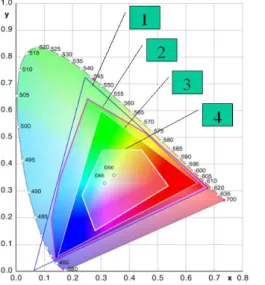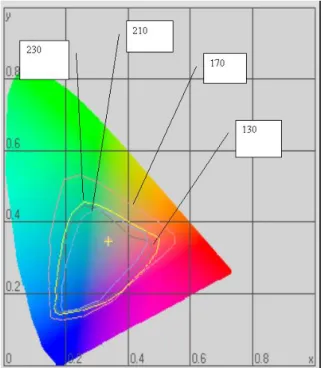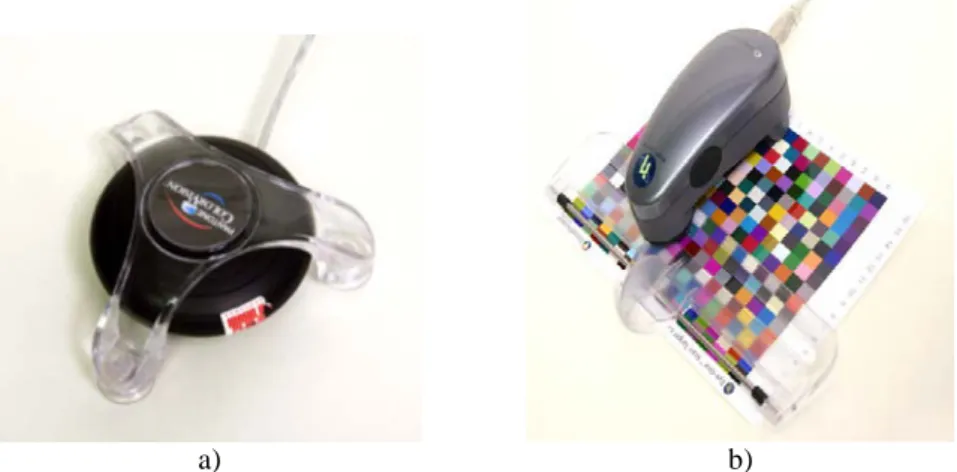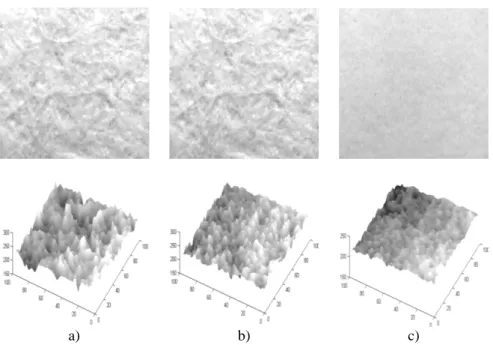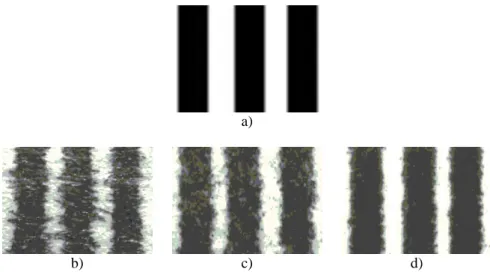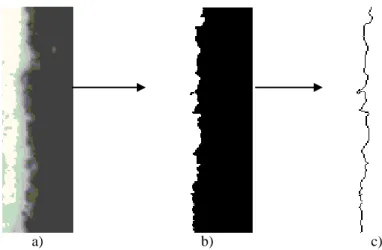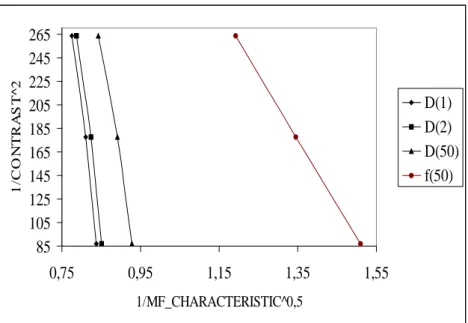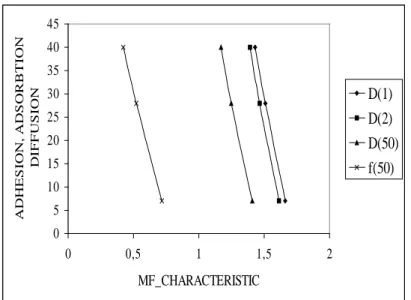Lihatshev Andrey–Domasev Maxim–Shavkun Sergey–
Cheslov Igor–Gnatiuk Sergey
St. Petersburg State University of Cinema and Television
andylee@rambler.ru; ganatetsky@mail.ruQUALITY MANAGEMENT OF IMAGING DATA IN MULTIMEDIA – CORRECT REPRESENTATION BY VARIOUS INPUT/OUTPUT IMAGING EQUIPMENT AND
MEDIAS
One of the main goals of high-quality multimedia graphics is its proper percep- tion and visualization by various devices.
Apart from graphical resolution, photographical wideness, brightness, color ren- dering plays a substantial role in the process of image scanning with subsequent visualization.
Significant discrepancies can arise if scanning and visualization devices make use of different color schemes (Figure 1).
Figure 1: Color spaces of various imaging devices and medias on CIE (eng. Inter- national Commission on Illumination). Diagrams: 1 - Ekta RGB color space;
2 - E-6 color transparency film; 3 - sRGB color space (monitor); 4 - CMYK color space (printer). Outer figure showst he full color gamut of the human eye.
This problem became vital in the design and operation of imaging systems as a body of multimedia technologies for global databases, which are used for storing and a systematization of different documents.
Imaging information systems and technologies allowed persons to avoid usage of original documents and have become widely used lately by such big information
“storages” as museums, libraries and archives.
To achieve an adequate color rendering on all stages of image scanning- visualization, several companies have designed a special color management system (CMS).
This is based on the International Colour Consortium’s (ICC) developments. The main ICC development is the universal colour profile of a device – a special file used to store details of the colour management of a device, as a colour profile is unique for each device or material, being used for image visualization (Figure 2).
Figure 2: Difference in the colour gamut of Lomond ink-jet papers with defferent base thicknesses (g/m2)
To create a colour profile special colour-metric equipment is used, combined with colour test objects and software (Figure 3).
Then, the profile is used by CMS to automatically compensate for the colour rendering depending on the used material or device.
a) b)
Figure 3: Equipment for colour measurement. a) - Panton Spyder fotocolorimetr and b) - Gretag Makbeth Eye One spectrophotometer with colour target.
Recently, production of a wide range of media for ink-jet printers was launched by a number of manufacturers, starting from general-purpose materials, to photo- graphic – quality paper.
It turns out that this is essential to account for structural details via which to manage colour for most paper or polymeric based materials.
Pic. 4 shows the great differences between surface structure and its brightness characteristics.
This is related to the surface topology of the material, its adhesive properties, volumetric, adsorption and the diffusion characteristics of the receiving layer.
Image formation is governed by complex super positioning of these features.
We have made an attempt to quantitatively account for topological, adhesive, ad- sorption and diffusion properties of material and their influence on image photo- graphic parameters:
local contrast -
( ) ( ) ( ) ( )
i j L( )
i j Lj i L j i j L
i
C , ,
, , ,
2 1
2 1
+
= −
where L1, L2 – average brightness levels with a different aperture;
C(i, j) – local contrast.
and sharpness -
( )
a f( )
b fdx dx df Ro
b a
−
=
∫
2where
2
dx
df – brightness change speed;
f(a) – f(b) – brightness difference.
by means of a number of topological dimensionless quantities.
To obtain topological properties, micrographs of a clean surface at different magnifications (60х – 200х) were used (Figure 4).
Image photographic parameters were correlated with the surface micro-pattern on the basis of multifractal formalism.
Fractal theory methods allow operating with a wide range of criteria. They quan- titatively represent the topology features of objects analysed. This approach is wide- ly used in the science of materials, for simulation of non-uniformity stochastic dis- tributions in volume or on the surfaces of analysed structures. This is the spectrum of fractal dimensions used as main topological characteristics for such description.
The authors used the values characterizing:
– uniformity of roughness distribution – D(1), – their correlation – D(2),
– enthropy level evaluation – D(q=max) – and structure homogeneity index - f(q=max).
a) b) c)
Figure 4: Grayscale images of parts of the surface of various papers and their brightness diagrams: a) general purpose uncoated paper; b) coated paper; c) ink-jet
photopaper
The influence of the adhesive and adsorption properties of the material was measured, as a result of interactions with colored and non-colored ink components.
The geometric characteristics of the test-object micrograph (60х - 200х) were measured. As a test-object, a micro-raster was used with an equal width of stripes (Figure 5). The density of the stripes corresponded with the maximal resolution of the printing device.
a)
b) c) d)
Figure 5: a) - a micro-raster as a test-object; and the result of ink adhesion, ad- sorption and diffusion on different papers: b) - uncoated paper, c) - coated paper;
d) - photoquality ink-jet paper
A quality evaluation of the image formed on a material surface was conducted by:
– calculation of the values of local contrast;
– sharpness;
– and color coverage at four fixed levels of brightness.
Correlation and regression analyses established a strong relation between a me- dia’s surface topology and its adsorption, adhesive, diffusion and photographic characteristics (Figure 6–10).
a) b) c) Figure 6: Extraction of information from a grayscale image.
Figure 7: Use of a regression analysis for estimation of ink adhesion, adsorption and diffusion
85 105 125 145 165 185 205 225 245 265
0,75 0,95 1,15 1,35 1,55
1/MF_CHARACTERISTIC^0,5
1/CONTRAST^2
D(1) D(2) D(50) f(50)
Figure 8: dependence of a contrast coefficient on multifractal characteristics
0,015 0,02 0,025 0,03 0,035
0,4 0,9 1,4
MF_CHARACTERISTIC
1/SHARPNESS
D(1)
D(2) D(50) f(50)
Figure 9: dependence of sharpness on multifractal characteristics
0 5 10 15 20 25 30 35 40 45
0 0,5 1 1,5 2
MF_CHARACTERISTIC
ADHESION, ADSORBTION, DIFFUSION
D(1) D(2) D(50) f(50)
Figure 10: dependence of ink adhesion, adsorption and diffusion on multifractal characteristics
Cluster analyses of the medias of various manufacturers together with the esti- mated parameters allowed to form, on their bases led to the formation of three large groups, each of which can be characterized by a number of parameters with their own values.
It allowedus to divide the tested objects into three groups:
– generic purpose papers, – papers of improved quality
– and medias that can be used for photographic quality printing.
Table 1 and 2 show how surface and photographic parameters depend on several groups of materials.
Table 1: Dependence of surface parameters on several groups of materials
Media type
*Dispersion (pixel)
**Spill coefficient (n/d units)
Uncoated paper 40 1,0
Coated paper 28 1,5
Photoquality ink-jet paper 7 1,7
* Standard deviation: uncoated papers – 10, coated papers – 4, Photoquality ink-jet paper – 1 pixel
Table 2: Dependence of photographic parameters on several groups of materials
Media type Average image characteristics Sharpness Average local contrast
Uncoated paper 66,68 0,11
Coated paper 43,70 0,08
Photoquality ink-jet paper 31,26 0,06 Estimated parameters formed a base for a relational database.
The base management system is an intellectual superstructure that makes the formulation of requests, more accessible.
According to needs and demands made in the equerry there can be found corre- sponding media whose parameters are stored in the database:
– the average media’s characteristics of a given class; and
– concrete recommendations on the preferred use of the media where characteris- tics guarantee the building of an image with the required quality.
References
Гнатюк С.П., Неклюдов М.Ю., Лихачев А.Б. / Оптимизация изображений объектов различной морфологии для получения количественной информации с использованием систем автоматического распознавания образов. // Тезисы докладов международного симпозиума «Фотография в XXI веке» 2001. c. 172–174
Гнатюк С.П., Лихачев А.Б. / Создание интегральной системы обучения на основе программной среды Matlab. // II Всероссийская научная конференция «Проектирование инженерных и научных приложений в среде Matlab» ISBN 5-201-14971-5, 2004, с. 278–289
Гнатюк С.П., Лихачев А.Б. / Выделение информационно–значимых элементов полутонового изображения на основе анализа его гистограммы.. // II Всероссийская научная конференция «Проектирование инженерных и научных приложений в среде Matlab» ISBN 5-201-14971-5, 2004, с.
487–498
